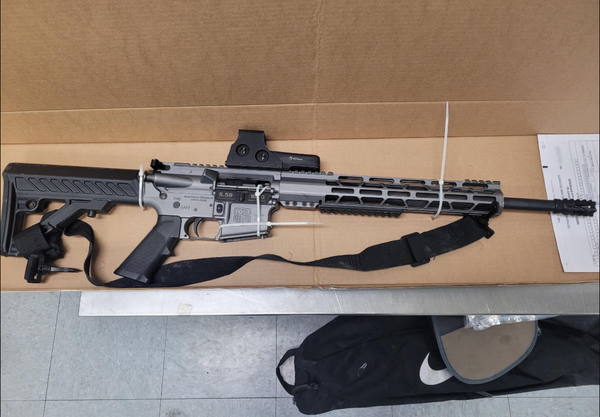
Artist-poet Jesse Darling’s recent survey show at Modern Art Oxford took a swipe at the tidy authority of museum displays. Glass-topped cabinets teetered and slumped into corners, metal stands refused to do just that, and an exuberant – if terrifying – rollercoaster sculpture looped the upper reaches before unravelling into splayed track. The programming of that show directly after an exhibition by Anish Kapoor – an artist who delights in impeccably controlled materials – felt gleefully pointed.
Coming swiftly afterwards, Darling’s Enclosures at Camden Art Centre is a rather different animal. The result of a ceramics fellowship that took place more off site than it might have under less Covidy circumstances, the show translates the artist’s interests in vulnerability and care into the exploration of clay.
The material appears in many guises. London clay – the primordial gunk oozing stickily beneath our capital – turns up as London bricks, which map out a pattern of walls and entrances on the floor. Coarse yellow clay has been made into clumsily formed hands, which protrude from the walls fired and unfired. Clay as a processed industrial product manifests as cool white tiling, transforming one wall of the gallery into that of an old public toilet. The elite material in this lineup is porcelain, crafted into little plump-buttocked doll bodies in radiant white.

The clay body forming each element, and the nature of its participation in the structure Darling has built, thus becomes a metaphor for the human body. The rough clay hands scrub dirty smears from the white bathroom tiling. Concrete and London bricks invite us into – or keep us out of – various parts of the gallery. The porcelain dolls are displayed under bell jars, or kept on a high shelf safely out of reach.
Darling’s earlier works, such as The Ballad of Saint Jerome (shown at Tate Britain in 2018) expressed the vulnerability of the body in terms of sickness and damage, and explored the power relationship that emerged between the carer and the cared for. In Darling’s reimaginings of the legend of Saint Jerome, the lion becomes distinctly ambivalent at being beholden to the hermit. In honouring Saint Jerome for pulling a thorn from his foot, the lion in the legend has to repress his own nature and become a friend to man. In accepting care the lion must also accept a loss.
In Enclosures, vulnerability appears more as a social construct, and care occupies a sliding scale that ranges from parental concern through corporate surveillance to the threat of bodily violence. Cameras of various kinds are mounted around the gallery. You don’t really notice them at first: we are now so accustomed to surveillance cameras tracking us in London that these plastic-clad electronic eyes barely register.

A tiny portable monitor for a nanny-cam is strapped to one of the concrete pillars. Its camera is trained on the shelf of porcelain doll bodies in an approximation of hands-off parental care. It becomes apparent that we, too, are being filmed: from many angles, and perhaps with less benign intent than the dolls. The footage from one camera positioned over the (barbed-wire-topped) entrance door is projected on to the wall, behind a tiny paper maquette of a shed behind a white picket fence. Walking to the other end of the space, beneath a white lace pelmet, we encounter a small old-fashioned box television transmitting footage of the gallery behind us.
Red vinyl hieroglyphs are stuck next to each camera, and across various sections of wall. Some are struck-through clusters of lines, like a prisoner counting down the days. Others seem to be approximating text, as though making an unsuccessful attempt at communication: “Hi!” “Surveillance Cameras in Use” “Smile, you’re on CCTV!”. Perhaps these emblems of control have gone a little rogue, like Darling’s wayward wobbly furniture?
Two glass cabinets contain old wood and metal hammers decorated with coloured ribbons and bells, like babies’ rattles, jesters’ batons or morris dancers’ sticks. They are tools of violence or construction dressed up as distracting toys. Are they a threat or a way to break free of the system? Or both?
It is not such a leap from making work about the unwell or damaged body to making work about a body submitted to various forms of state control (even if that control is imagined to be for our own good). We cannot place a firm partition between the political and the emotional spheres: an oppressive environment plays out in the physical body. This is not easy art. Darling has taken on a tricky task, laying down a thoughtful route to address particularities of the body without sliding into identity politics. Navigating it is exhilarating.







